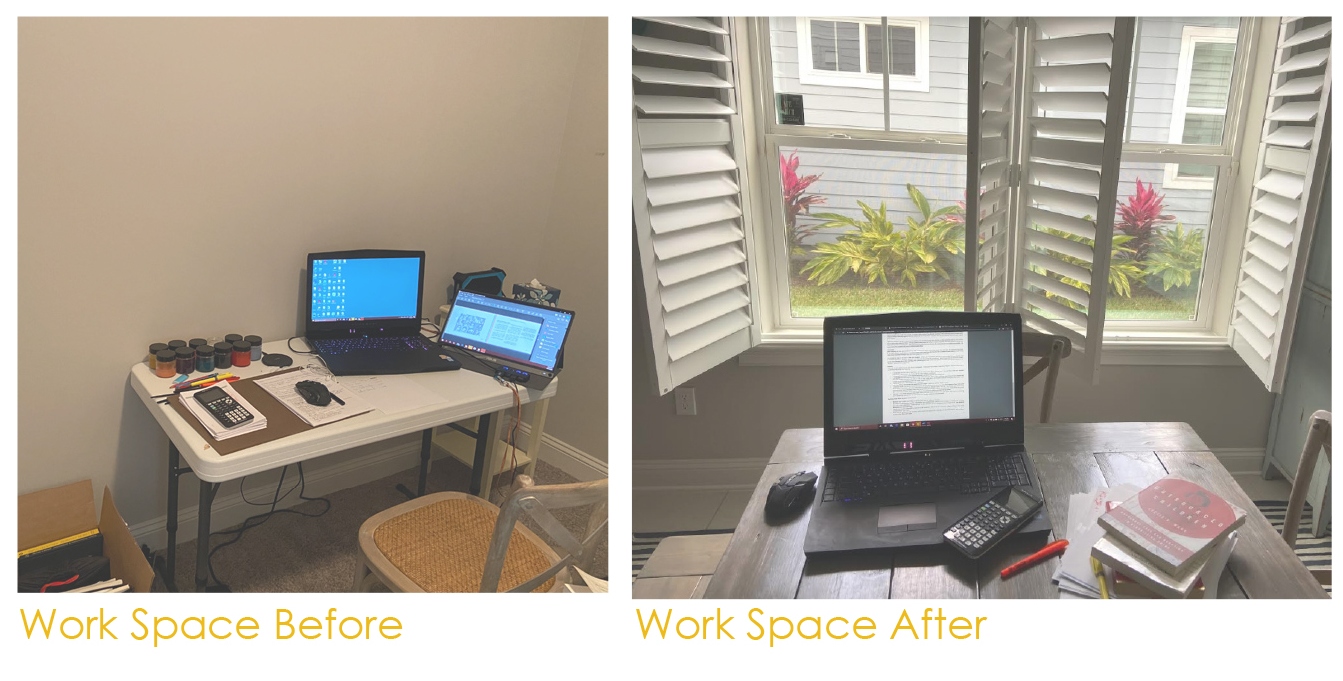

How can the space we work and relax in affect our well-being? As we continue to follow social distancing guidelines by working from home, students in the School of Architecture and Planning have been studying how their homes are affecting their emotions and cognitive abilities.
Robin Puttock, a visiting assistant professor in the School of Architecture and Planning, teaches neuroarchitecture for well-being: the study of the relationship between brain processes and architectural environments and their impact on the mental, emotional, and physical health of people.
When the University transitioned to virtual learning in March, Puttock saw this as an opportunity to create a more personal approach to her neuroarchitecture class by assigning students to do a case study in their homes instead of a final paper.
“In architecture we’re allowed to be creative,” Puttock said. “If we can think of creative ways to apply what we’re learning in a new and different way, it can be very beneficial.”
Students collected data from the locations they are currently living, working, and relaxing in. They studied the spaces and formed a hypothesis relating to the spaces and their well-being. Then they tested their hypotheses through an analysis of data collected by their classmates. To do this, students changed either their work or relaxation space based on their analysis and recorded how that change improved their ability to work or relax in that space.
“I was very excited to participate in a study about this whole situation of being home and social distancing, as it has taken a toll on people in different ways,” says Maria Niedziejko, a senior architecture major with a minor in sustainability.
Before the transition to virtual classes students were learning about theories in architecture that can be proven by data; empathetic design, the idea of designing to meet the user’s feelings and needs in the built environment; biophilic design, the idea of implementing nature into the built environment; and how architecture has an impact on people mentally, emotionally, and spiritually.
“We are basically studying anything relating to all of our senses; access to nature, acoustics like having drapes on the windows or closing the door, sightlines, daylight vs. artificial light, and much more” Puttock said.
“We spend 90% of our lives in buildings. We are studying what we can do to make these places better for our mental health by reducing stress and other things,” Niedziejko said.
“Most of us don't take the time to really sit down and think about how we feel, or how well we concentrate while doing work, or even just relaxing on our couches. Not only did it give you a new insight on your home but it allowed you to really appreciate school and everything it offers us as students to be together in the building,” said Brianna Booth, a third year graduate student in architecture.
In her case study she thought about how views of nature and natural sunlight can help one’s mental state and improve concentration. “Originally my desk that I work at was in a corner between my living room and my kitchen in my one bedroom apartment,” Booth said. “After looking at all the data and thinking about what was taught in class I moved my desk to face my glass door which leads to a Juliet balcony and now have a view to the outdoor pool and patio and have lots of natural light hitting my desk.”
Niedziejko’s first change was opening her shades and windows to allow natural ventilation and daylight into her room. “This has helped my room become a much more calming place to do work,” she said. “Harsh artificial light often leaves me with a headache, so this change has really helped to reduce that.”
Puttock also gave extra credit to students if they had their friends or family participate in the study by filling out a data form on how they felt in the space they work or relax in. Booth thought it would be interesting to have her sister participate. “After talking to my sister about the study I realized that in filling out a four page form about her bedroom, she had subconsciously learned about all the material I had learned in class,” Booth said.
After much success and feedback from students, Puttock wants to continue to conduct case studies and collect more data with her students next semester and beyond.
“This case study is beneficial for everyone to do. Even if you aren’t an architecture major there is something for you to take away from this information,” Booth said. “I will take the information I have learned from this case study and class with me into the future. This information is exactly the research I was missing for my thesis. I believe that all buildings are designed for the occupants and thus the building should help to improve their wellbeing.”

—Gabrielle Obusek, Media Relations Specialist. Obusek can be reached at obusekg@cua.edu.